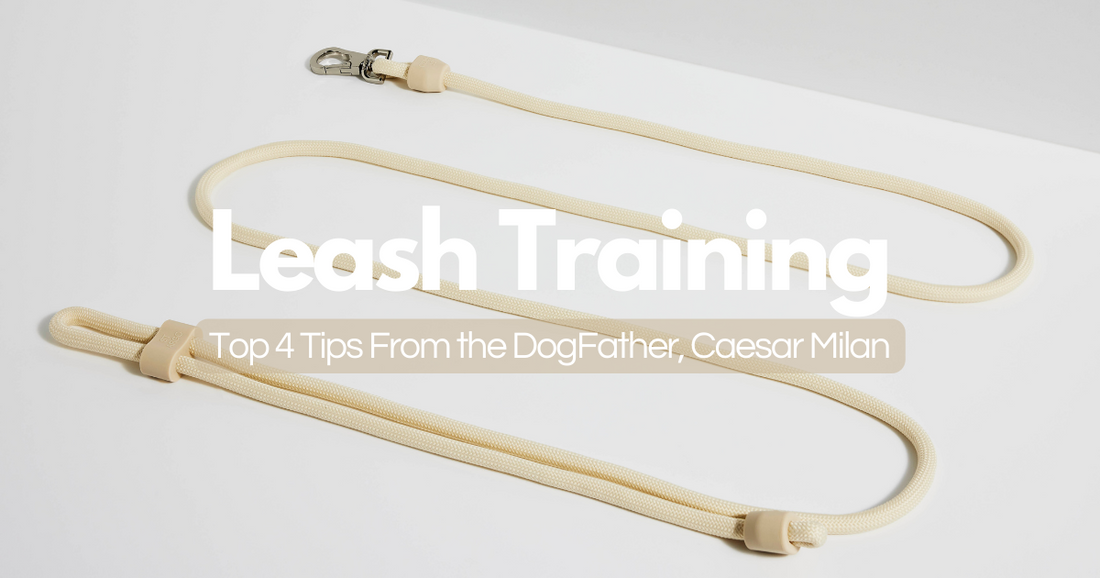
Ever wondered how the pros so effortlessly get their dogs to walk beside them dutifully, almost by an invisible rope?
Ever asked yourself how it got to the point where you dog CONTINUOUSLY tugs, stressing you out, and making your coffee fly everywhere?
Well, we’re here to help - and we’ve called in the big guns for some expert advice.
Caesar Milan, world-famed dog trainer, gives his top three tips on how you can effectively control your dog, train your puppy, and reverse some of the bad pulling habits of your adult dog.
Puppy mums, new dog mums, crazy-dog mums, this one’s for you. Let’s dig in!
Tip #1: Choose the Right Equipment
Just like anything, you (and your dog) can’t work without the proper gear.
Selecting the appropriate leash and collar/harness is crucial for successful leash training. Opt for a sturdy, comfortable leash that provides you with control without causing discomfort to your dog. For most dogs, a standard 120cm lead works well. Additionally, choose a collar or harness that fits your dog properly and doesn't restrict their movement or cause choking.
If you want more control with your dog, opt for a super-soft rope leash, such as the ST ARGO hands free lead. It can be used across your body, on your waist and of course by hand for added control.
The ST ARGO harnesses are all no-pull - meaning they have a leash attachment point on the front of your dog’s chest. It twists your dog when he or she pulls the leash, thus preventing excessive tugging.
Tip #2: Start Inside!
This might seem kind of funny. But bear with us..
Begin leash training in a familiar and controlled environment, such as your home or backyard. Attach the leash to your dog's collar or harness and allow them to get accustomed to the feeling of wearing it. Practice walking around indoors, rewarding your dog for staying by your side and following commands.
This is perfect for not just puppies, but also adult dogs.
It removes their temptation to be distracted by smells and other people or dogs.
Tip #3: Positive Reinforcement
Caesar’s number one tip? Reinforce all your training with positive reinforcement.
Positive reinforcement is the key to effective leash training (well, to ALL dog training).
Use treats, praise, and affection to reward your dog for walking calmly beside you. Whenever your dog behaves well on the leash, offer a treat and lavish them with praise. This encourages them to repeat the desired behaviour.
Avoid reprimanding your dog if they tug. Instead, gently pull the leash (a small tug), and when they step back into line, showering them with praise and treats.
💡Pro Tip: Use the ST ARGO silicone treat pouch to easily carry your dog’s treats around with you and stay on top of positive reinforcement. This is an ESSENTIAL training gadget.
Tip #4: Consistency (and Patience) is Key
This one may seem straightforward, but it’s harder than it sounds.
Leash training takes time and patience, so don't expect instant results.
All dogs are different, and will pick up training different.
Caesar says, don’t forget celebrate small victories and continue reinforcing positive behaviours - even after your dog is ‘heeling’ like a champ.
Loved this? Check out our range of hands-free leashes, no-pull harnesses and treat pouches to get the training kick-started.
